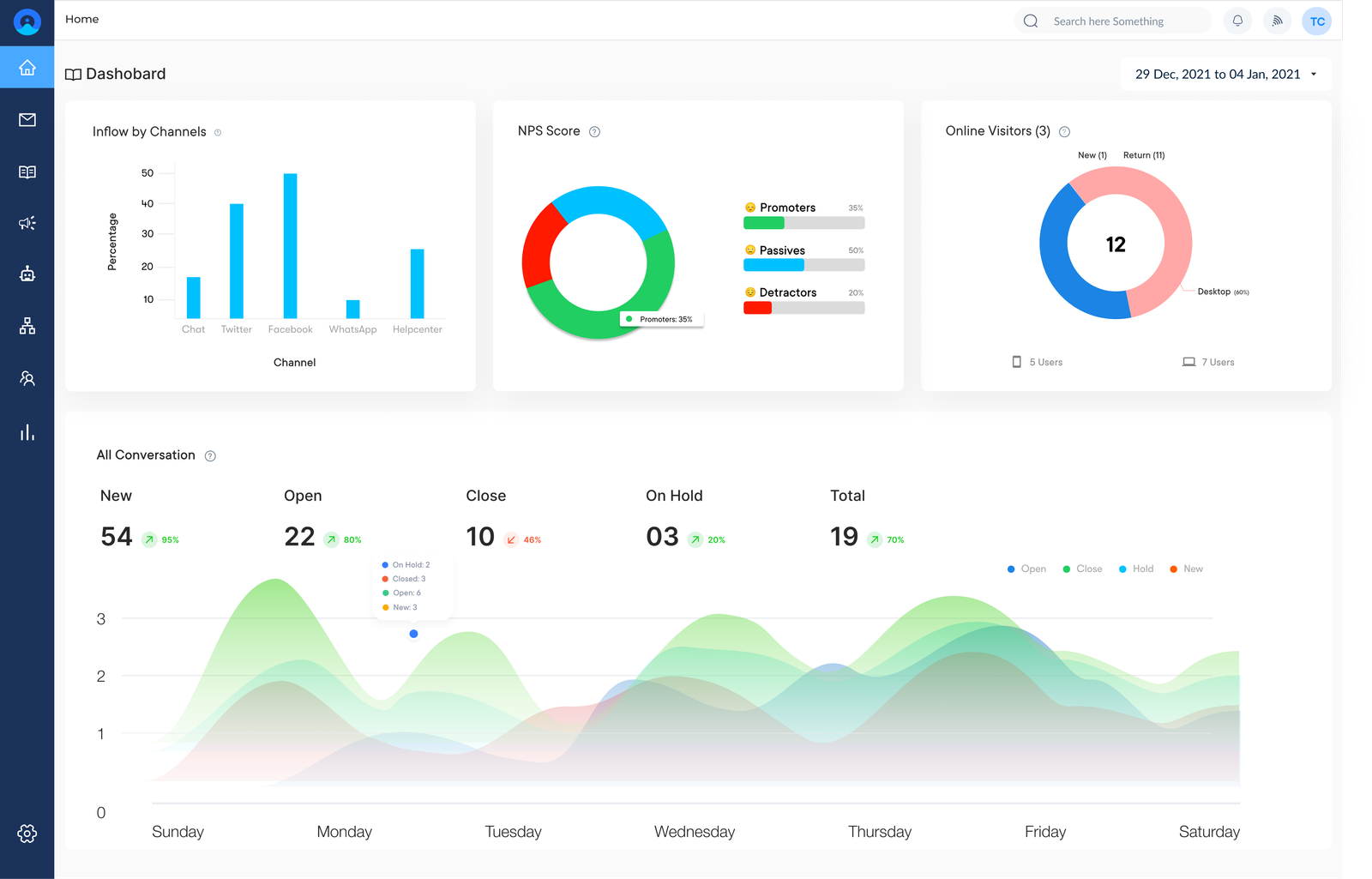Businesses can also incorporate relevant keywords and optimize their content for search engine visibility. Tailor the content formats and distribution channels to align with the preferences of the target audience on various social media platforms.
Tips:
- Develop a comprehensive content calendar to ensure a consistent flow of fresh, relevant content
- Leverage user-generated content, such as customer testimonials or reviews, to enhance credibility and authenticity
- Repurpose and distribute the content across multiple channels to maximize reach
5. Encourage Positive Reviews and User-Generated Content
Actively soliciting positive reviews from satisfied customers is an excellent way to showcase the business’s strengths and reinforce positive sentiment. More than 70% of people say that positive reviews make them trust a local business more.
Provide incentives or make it easy for customers to share feedback by embedding review prompts in post-purchase communications or incentivized offers for leaving a review.
Tips:
- Establish a streamlined review process: Make it simple for customers to leave reviews by providing clear instructions and direct links to popular review platforms.
- Leverage user-generated content: Encourage customers to share photos, videos, or testimonials showcasing their positive experiences with the offerings. Repurpose the content across the marketing channels.
- Offer exceptional customer service: Deliver outstanding customer experiences that inspire customers to share their experiences and recommend the business to others.
6. Respond to Negative Feedback and Address Concerns
Negative reviews, if left unaddressed, can significantly damage a brand’s reputation and deter potential customers. Brands can mitigate the impact of negative feedback and demonstrate their commitment to customer satisfaction by adopting a proactive approach.
Developing a protocol for responding to negative reviews and comments is essential.
The guidelines should outline the steps to be taken, the tone to be used and the escalation process for more complex or sensitive issues.
Tips:
- Monitor online mentions and reviews: Regularly monitor review platforms, social media and other online channels to identify negative feedback promptly.
- Respond promptly and professionally: Address negative reviews and comments on time, using a respectful tone, without being defensive or confrontational.
- Offer solutions and follow-up: Provide specific solutions to address the concerns raised and follow up to ensure the issue has been resolved to the customer’s satisfaction.
7. Implement Crisis Management Protocols
A comprehensive crisis communication covers a defined set of guidelines in place so that brands can minimize the impact of such events and protect their online reputation. Developing a crisis communication plan involves identifying potential crises that could affect the business, such as product recalls, data breaches, or public relations scandals.
Having pre-approved messaging and response strategies ready for the scenarios can help you respond swiftly across all communication channels.
Best practices:
- Establish a dedicated crisis response team: Assemble a cross-functional team for monitoring potential crises and managing communications during critical situations.
- Regularly review and update the crisis communication plan: Ensure the plan remains relevant by conducting periodic reviews and including lessons learned from past incidents.
- Leverage social media monitoring: Implement robust social media monitoring tools to quickly detect emerging crises related to the brand during critical events.
8. Leverage Social Media and Influencer Marketing
Maintaining an active and engaging social media presence is crucial to improving a brand’s thought leadership. Consistently sharing valuable content, interacting with followers and promptly addressing customer inquiries can enhance positive sentiment.
Collaborating with industry influencers and brand advocates can also significantly enhance a brand’s credibility.
Tips:
- Develop a comprehensive social media strategy: Define the goals, target audience and platforms most relevant to the business. Create a content calendar while establishing guidelines for tone, messaging and engagement.
- Identify and collaborate with industry influencers: Connect with influential brands within the industry who align with the brand values and resonate with the target audience.
- Cultivate brand advocacy: Incentivize satisfied customers to become brand advocates by sharing their positive experiences or user-generated content on social media.
9. Continuously Monitor, Analyze and Adapt
The online landscape is constantly evolving and businesses must remain responsive to changes to maintain a positive online reputation. Brands can manage their online reputation, build trust with their audience and maintain a competitive edge by embracing a data-driven approach.
Analytics tools provide valuable insights into the performance of the strategies, enabling you to identify areas for improvement and adjust the approach accordingly.
Tips:
- Establish key performance indicators (KPIs): Define measurable goals and KPIs that align with the ORM objectives. It can include sentiment scores, online review ratings, social media engagement metrics and website traffic.
- Conduct regular audits and competitive analysis: Periodically review the online presence, monitor competitor activities and analyze trends to identify potential threats.
- Enhance a data-driven culture: Encourage a data-driven mindset within the organization. Decisions should be informed by analytics and team members must be empowered to make data-driven recommendations for improvement.
5 Best Online Reputation Management Tools
Below we’ve highlighted the best online reputation management tools that can help you take control of the online image and protect the brand’s reputation.
1. Veemo
Best online reputation management tool for lower reputation risks


















